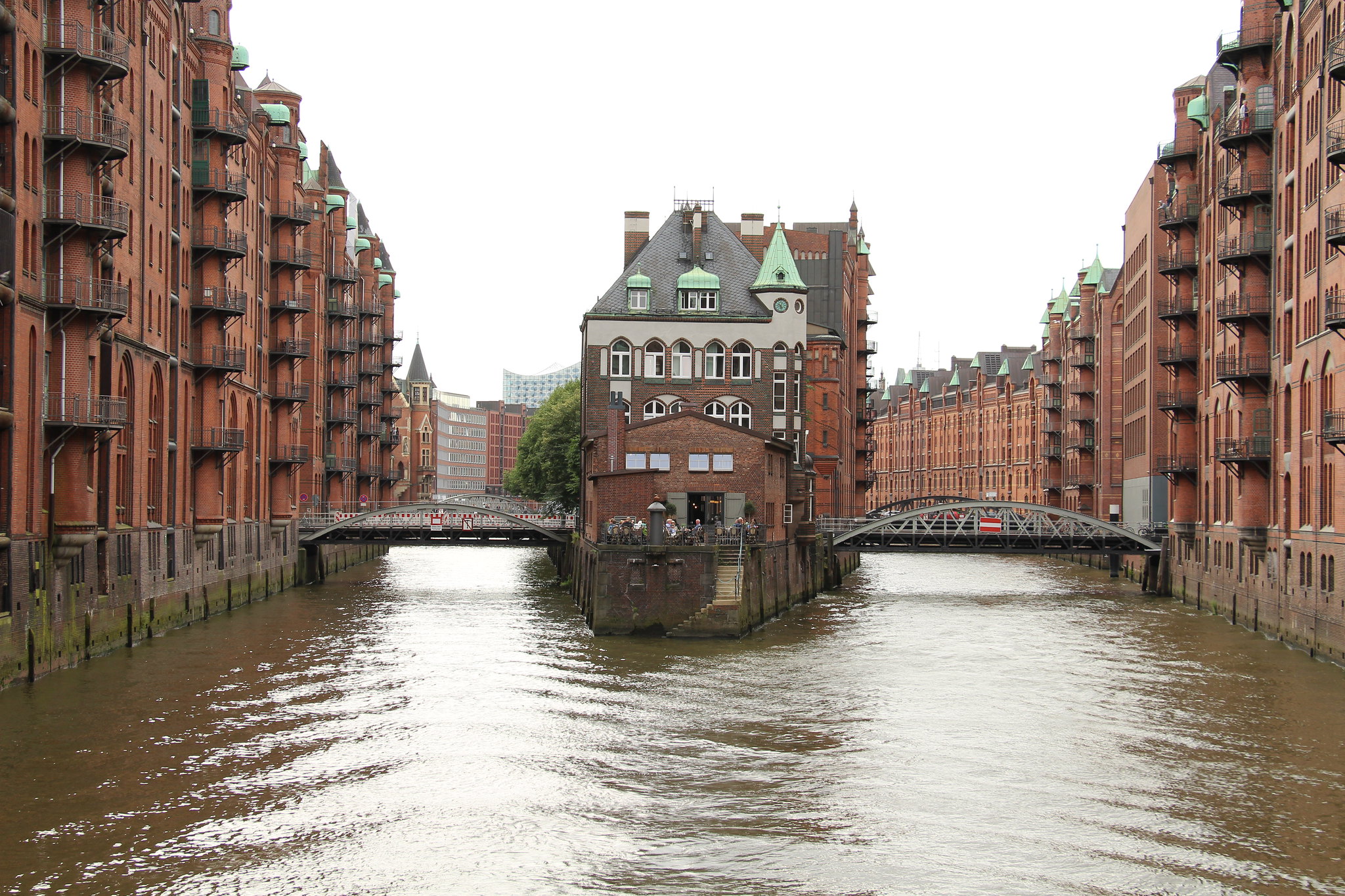Hamburg’s Speicherstadt district is a testament to the city’s rich maritime history and architectural ingenuity. This sprawling complex of brick warehouses, built between 1883 and 1927, stands as the world’s largest contiguous warehouse district and a UNESCO World Heritage Site. As you wander through its narrow streets and canals, you can’t help but be transported back in time to an era when Hamburg was one of Europe’s most important trading hubs.
The district’s name, which translates to “City of Warehouses,” perfectly encapsulates its original purpose. These massive structures were designed to store valuable goods such as coffee, tea, cocoa, spices, and textiles that arrived at Hamburg’s bustling port from all corners of the globe. Today, while some buildings still serve their original purpose, many have been repurposed into museums, offices, and cultural spaces, breathing new life into this historic area.
One of the most striking features of Speicherstadt is its distinctive neo-Gothic architecture. The red-brick facades, adorned with intricate details and ornate gables, create a mesmerizing visual rhythm as you stroll along the waterways. The play of light and shadow on these buildings, especially during sunset or when illuminated at night, offers a truly magical spectacle that draws photographers and architecture enthusiasts from around the world.
As you explore further, you’ll notice the ingenious engineering that went into creating this district. The warehouses are built on oak log foundations, driven deep into the marshy ground to provide stability. A network of canals runs between the buildings, allowing boats to navigate directly to the warehouses for loading and unloading goods. These waterways, known as “Fleete,” add to the district’s unique charm and have earned it the nickname “Venice of the North.”
One of the most fascinating aspects of Speicherstadt is how it seamlessly blends the old with the new. While the exterior of the buildings maintains its historic character, many interiors have been modernized to accommodate contemporary uses. This juxtaposition of past and present creates a dynamic atmosphere that reflects Hamburg’s ability to honor its heritage while embracing progress.
As you continue your journey through Speicherstadt, you’ll encounter several noteworthy attractions. The Miniatur Wunderland, the world’s largest model railway, occupies one of the old warehouses and draws visitors with its intricate miniature landscapes. Nearby, the International Maritime Museum showcases the city’s seafaring history through an impressive collection of model ships, maritime art, and nautical instruments.
For those interested in the district’s original purpose, the Speicherstadt Museum offers a glimpse into the daily operations of these warehouses during their heyday. Here, you can learn about the various goods that passed through Hamburg’s port and the complex logistics involved in storing and distributing them.
As your exploration comes to an end, you might find yourself at one of the district’s charming cafes or restaurants, many of which offer stunning views of the surrounding architecture and canals. It’s the perfect spot to reflect on the incredible history and beauty of Speicherstadt while enjoying a cup of coffee – perhaps made from beans that once passed through these very warehouses.
In conclusion, Hamburg’s Speicherstadt district is a must-visit destination for anyone interested in architecture, history, or simply experiencing a unique urban landscape. Its blend of stunning neo-Gothic design, innovative engineering, and modern adaptations makes it a true gem in Hamburg’s crown. As you leave this enchanting district, you’ll carry with you a deeper appreciation for the city’s maritime heritage and the enduring legacy of its architectural marvels.
Speicherstadt, the historic warehouse district in Hamburg, Germany, stands as a testament to the city’s rich maritime heritage and architectural ingenuity. Built between 1883 and 1927, this UNESCO World Heritage site showcases a unique blend of neo-gothic brick architecture and innovative engineering. The district’s network of canals, bridges, and warehouses not only reflects Hamburg’s past as a major port city but also demonstrates the adaptability of urban spaces.
Today, Speicherstadt has successfully transitioned from its original purpose to become a vibrant cultural and tourist destination, housing museums, offices, and entertainment venues. Its preservation and revitalization serve as a model for urban redevelopment, balancing historical significance with modern functionality, and ensuring that this remarkable piece of Hamburg’s history continues to thrive in the 21st century.

